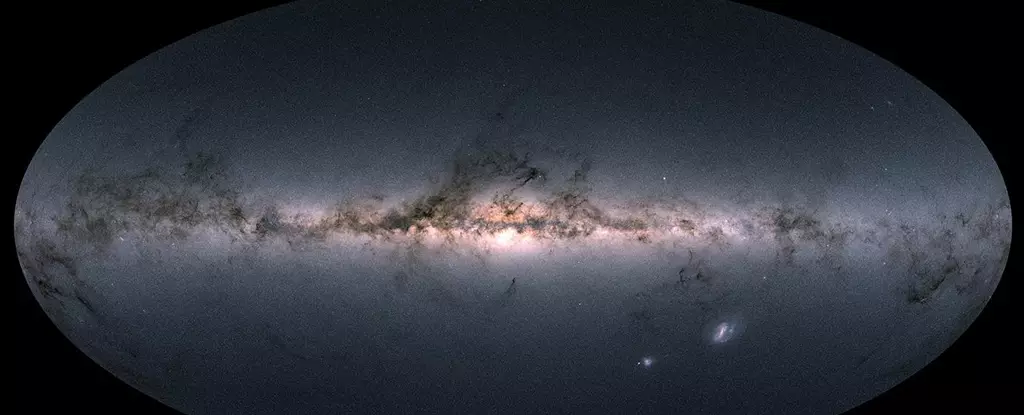The Milky Way, our home galaxy, has not attained its current mass and structure solely through its own internal processes. Rather, it owes a significant portion of its development to collisions and mergers with other galaxies. This phenomenon is not unique to our galaxy, as similar interactions can be observed in galaxies throughout the Universe. Recent research suggests that the Milky Way has been involved in a series of collisions, the most recent of which occurred less than 3 billion years ago. The European Space Agency’s Gaia mission has played a crucial role in uncovering these insights by meticulously mapping astronomical objects within and around the Milky Way.
Through repeated measurements of stars’ positions and motions, Gaia has identified distinct patterns known as “wrinkles” within the Milky Way. These wrinkles are indicative of past merger events, leaving a lasting imprint on the galaxy’s structure. By analyzing the positions and velocities of stars with precision, researchers have been able to trace back the timeline of these collisions. Interestingly, the Milky Way seems to be “getting less wrinkly over time,” contrary to the typical aging process observed in living organisms.
Deciphering the Merger Evidence
One key piece of evidence supporting the occurrence of recent mergers is the Fe/H-rich region within the Milky Way, where stars exhibit eccentric orbits. These stars, collectively referred to as “the Splash,” share a common chemical fingerprint and orbital characteristics that point towards a shared origin. This distinctive group of stars is believed to have been influenced by heating and altered orbits resulting from past collisions. The debate lies between two possible scenarios: the Gaia Sausage/Enceladus collision 8-11 billion years ago and the Virgo Radial Merger less than 3 billion years ago. The morphology of debris and phase space structures provide critical insights into the timing and nature of these events.
The evolving understanding of the Milky Way’s merger history underscores the complexity of galactic evolution processes. The multitude of mergers and interactions, including the potential involvement of multiple entities in the Virgo Radial Merger, reveal a dynamic past for our galaxy. As astronomers continue to delve deeper into the merger history of the Milky Way, new data from Gaia promises to unveil further details about the galaxy’s formation and development. The constant rewriting of the Milky Way’s history highlights the importance of ongoing research and exploration in the field of galactic astronomy.
The Milky Way stands as a testament to the transformative power of galactic collisions and mergers. By studying the wrinkles, unique orbits, and chemical signatures within our galaxy, researchers have pieced together a compelling narrative of its past interactions. With each new release of data from Gaia and advancements in simulation techniques, our understanding of the Milky Way’s evolution continues to evolve rapidly. Ultimately, these insights not only shed light on the formation of our own galaxy but also contribute to the broader understanding of galaxy formation and evolution in the cosmos.


Leave a Reply